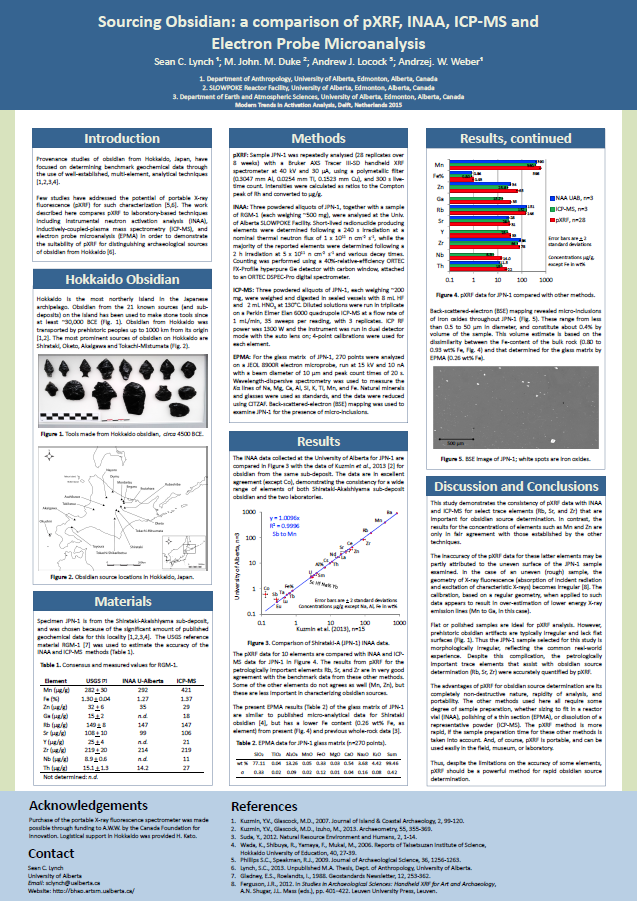Dr. John Duke and Mr. Sean Lynch (former BHAP Master's student) present poster at MTAA 14 conference
August 18, 2015
Dr. John Duke and Mr. Sean Lynch (former BHAP Master's student), will be presenting a poster at the annual International Conference on Modern Trends in Activation Analyses (MTAA 14) held in Delft, The Netherlands from August 23-28, 2015.
The poster presentation contained data from Sean's thesis, and John Duke presented the poster on his behalf. Sean would like to thank Dr. John Duke and Dr. Andrew Locock for their contribution to the BHAP through their continued support of his MA research.
Abstract: "Sourcing Obsidian: a comparison of pXRF, INAA, ICP-MS and Electron Probe Microanalysis" by Lynch, S.1, Duke, M.J.M.2, Locock, A.J.3, Weber, A.W.1
1. Department of Anthropology, University of Alberta, Edmonton, Alberta, Canada
2. SLOWPOKE Reactor Facility, University of Alberta, Edmonton, Alberta, Canada
3. Department of Earth and Atmospheric Sciences, University of Alberta, Edmonton, Alberta, Canada
In the last decade obsidian provenance studies in Hokkaido, Japan have focused on determining benchmark geochemical data for obsidian deposits through the use of well-established, multi-elemental, analytical techniques. However, few studies have addressed the potential of portable X-ray Fluorescence (pXRF) for the rapid, nondestructive, multi-elemental characterization of Hokkaido obsidians. Given the limited application of pXRF in archaeological research in Japan it was necessary to compare this technique to proven, laboratory-based, geoanalytical techniques such as instrumental neutron activation analysis (INAA), inductively-coupled plasma mass
spectrometry (ICP-MS), and electron probe microanalysis (EPMA) in order to validate pXRF and determine the overall suitability of this technique. This study evaluates the applicability of pXRF for the characterization of Hokkaido obsidian source material and artifacts by testing its compatibility with well-established methods of geochemical analysis, and by comparing the results of this study to previously published Hokkaido obsidian source data.
Download poster here
